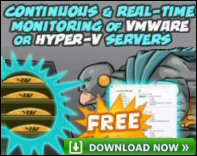Benefits of migrating to Exchange 2003
Migrations are exciting. Let change be an opportunity for innovation. Remember that the future does not have to equal the past, take the time to check all the new features of Exchange 2003.
Topics for Exchange 2003 Migration
- Migration options
- Reasons to migrate to Exchange 2003
- Transitioning to Exchange Server 2007
- Transitioning to Exchange Server 2010
- Improved Performance
♠
Exchange Migration Options
While there are many permutations of Exchange and Outlook, the best combination if Exchange 2003 (server) with Outlook 2003 (client).
The main focus of my advice is about migrating from Exchange 5.5 to Exchange 2003. However there are other upgrade scenarios:
Exchange 5.5 to Exchange 2000 – Because you have Windows 2000 not Server 2003.
Exchange 2000 to Exchange 2003 – Because you want the latest Exchange features and you have upgraded to Windows Server 2003.
Reasons to Migrate to Exchange 2003
- Clustering – 4 or 8 Node Active / Passive clustering is now a feasible option.
- Multiple storage groups – Divide and rule for better performance and faster restore. Put the Boss and senior staff in their own mail store.
- Multiple administrative Groups – useful for delegation.
- OWA (Outlook Web Access).
- OMA (Outlook Mobile Access)
- Front end / Back end Exchange servers, used in conjunction with firewalls to improve security.
- RPC over HTTP allows OWA clients to collect their email by only opening port 80
- Volume Shadow Copy.
- Query Based Distribution Groups. Let LDAP create distribution lists dynamically, based on users department or office.
- ExDeploy and ExMerge new wizards to help you migrate and configure.
- Better message queue management. (Also gives faster throughput)
- Outlook Cached Mode (Laptops).
- Junk email filtering. (Not perfect, but a step in the right direction)
- Single mailbox restore.
- Better support for mobile users thanks to OWA and OMA.
- Enhanced junk mail filtering on both client and server (see more here).
- Greater server availability.
- Superior reliability, better manageability.
- Reduced number of servers, less fragmentation.
- Improved replication traffic, thanks to Windows Server 2003.
 Guy Recommends: The SolarWinds Exchange Monitor
Guy Recommends: The SolarWinds Exchange Monitor
Here is a free tool to monitor your Exchange Server. Download and install the utility, then inspect your mail queues, monitor the Exchange server’s memory, confirm there is enough disk space and check the CPU utilization.
This is the real deal – there is no catch. SolarWinds provides this fully-functioning freebie, as part of their commitment to supporting the network management community.
Free Download of SolarWinds Exchange Monitor
Improved Performance
My rule of thumb for Exchange 5.5 was 500 users per server, amazingly, with Exchange 2003, you can support 2000 users on the same specification machine. The latest Exchange version is so much more efficient at handling messages.
The Evolution of Exchange Server Deployment at Microsoft itself
| Exchange 4.0 | Exchange 5.0 | Exchange 5.5 | Exchange 2000 | Exchange 2003 | |
|---|---|---|---|---|---|
| Mailboxes per Server | 305 | 305 | 1,024 | 3,000 | 4,000 |
| Mailbox Size/User | 50 MB | 50 MB | 50 MB | 100 MB | 200 MB |
| Restore Time per Database | 12 hours | 12 Hours | 8 Hours | 1 Hour | 25 minutes |
| Total number of Mailboxes | 32,000 | 40,000 | 50,000 | 71,000 | 85,000 |
Guy Recommends : SolarWinds’ Free VM Monitor
The best feature of this new this new version of SolarWinds VM Monitor is that it checks Windows Hyper-V. Naturally, it still works with virtual machines on VMware ESX Servers. VM Monitor is a clever desktop tool that not only tests that your server is online, but also displays the CPU and memory utilization for each node.
It’s easy to install and to configure this virtual machine monitor, all you need the host server’s IP address or hostname and the logon info. Give this virtual machine monitor a try – it’s free.
Download your free copy of SolarWinds VM Monitor.
Summary
I used to be sceptical about the TCO (Total Cost of Ownership), however I am convinced that investing in the latest technology will repay the outlay. What you also get is a ‘smarter’, and more efficient email system. This page will help you to identify which new features will help your organization, and which are merely ‘toys’ more suited to other organizations.
If you like this page then please share it with your friends

